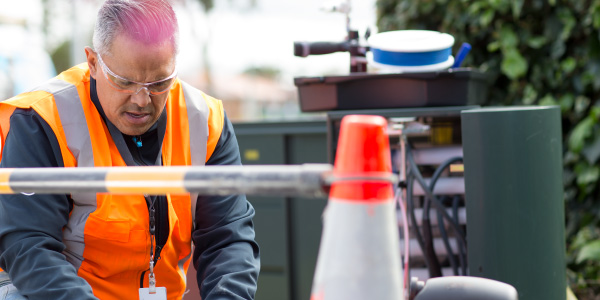
Working Down Low
Many different tasks we do day to day require us to work down low, and it’s crucial to find safe and effective positions that allow us to maintain good posture and the natural curve of the back. Let’s face it, it doesn’t get any easier as the years go on, especially if we haven’t always had the best technique, or actively sought to release the tightness and muscle load on our body each day.
We wanted to look at three basic positions that can be simple but effective steps in helping you maintain good health.
Squat Down
Squatting is one of the most natural positions we can take. For the longest time, humans have used the squat and crouch positions to work, cook, relax, and even relieve themselves.
Today, we have replaced squatting with sitting which often leads to issues. Not that sitting is inherently bad, but we don’t do it correctly, and we do it for way too long. More often than not, this leads to tight and weak muscles and poor posture.
Now, when done properly, the squat engages the entire lower body, keeps your core and hips working, and also engages your back muscles. It keeps your body strong, unlike sitting where a lot of muscles are not engaged and become weak over time.
Squatting also keeps you honest with yourself. If you cannot go into a full squat with your feet flat on the ground, it’s time to work on your mobility and change that. Most people can’t get into a deep squat position due to hip, thoracic spine, and ankle tightness.
Now, to work in a squat position safely, you need to squat down with your feet flat on the ground. Ideally, you should squat down to the bottom where the back of your thighs rest against your calves, and your lumbar spine has the natural curve.
If you can’t go that low, squat as deep as you can and maintain the natural curve of your low back. Over time, with practice, you’ll be able to stay in this position for longer periods and increase the depth of your squat.
And if you have trouble keeping balance, use a balancing object at first. Something you can lean against or hold onto can be a great transitionary tool.
Crouch Down
Crouching, though considered to be the same as squatting, is a position where you squat but your heels are up in the air. This is a great position you can use to mimic a squat while working on something for a short period.
It’s also a good substitute for the full squat if your mobility doesn’t yet allow you to get into the position comfortably.
Much like with the squat, here you also need to be mindful of your spinal position and not allow yourself to slouch forward too much.
Crouching like this can add load to your knees, and is less stable than a squat, so it is for short periods if required to protect your back, but not to the detriment of your lower body or safety.
One Knee
Having one knee on the ground for support is a great position for tasks that need to be worked on at a medium height (e.g., working on an electrical socket that is around waist height). This position is also a good way to take a break from squatting or crouching if you become fatigued and your posture changes.
Keep in mind that you should use both knees and switch between them to avoid muscle imbalances or potential pain.
Also, remember to put a cushioned material underneath your knee to avoid bruising or damage to the knee, especially on hard floors.
Unlike the squat, the kneeling position allows you to maintain perfect posture all the time because the mobility requirements are far smaller. Most people can also maintain this position for long periods without becoming fatigued.
Practicing your lunge technique is a good conditioner to prepare for maximizing this position and getting up and down correctly.
Three Tips on Working Down Low
1.Be mindful of your posture all the time
It’s easy to lose track of our body’s position when we are concentrating on a task. It’s important to look at the position we’re in regularly because we might find ourselves in a less than optimal position that could eventually lead to poor posture, muscle imbalances, or even an overuse injury. If you find your back is rounded or compromised, find another way to approach the task.
2.Make sure that your back is in a neutral position
No matter what position you’re using, maintaining the neutral curve of your spine is crucial if you want to keep it healthy over the long term.
Being rounded forward not only leads to spinal injuries, but it also impacts our posture negatively and doesn’t allow us to properly engage our back muscle, making us fatigue much quicker.
If there is a necessity for brief periods of reaching or bending that [uts your back in a poor position, make sure that tighten your belly button, to activate your core muscles that are there to provide some stability and protection for your back.
3.Take frequent breaks, especially if fatigue begins to set in and your position changes
No matter how good our position is, fatigue inevitably sets in, and we need to be mindful of that fact. When you start feeling your muscles burning and your body trying to compensate by finding another position, take a short break.
Get up, walk around a bit, maybe do some light stretching for a minute or two, and get back to work again.






Comments